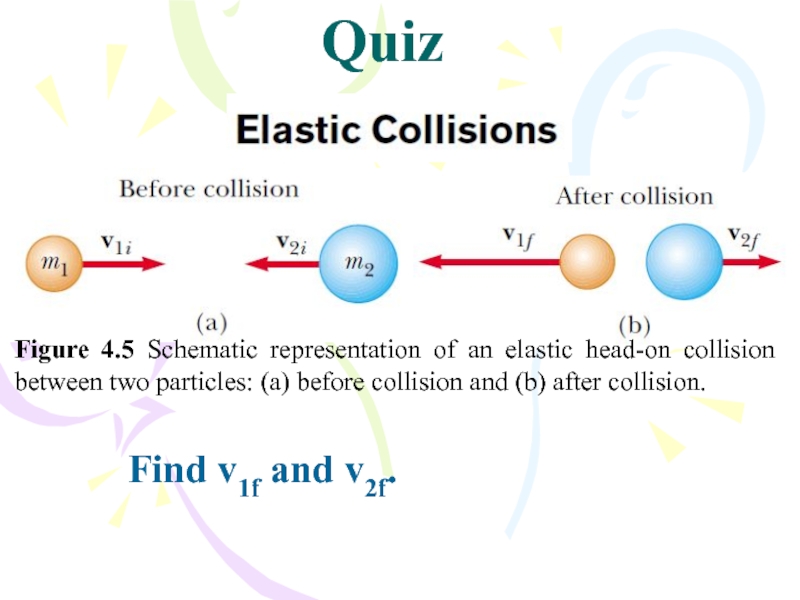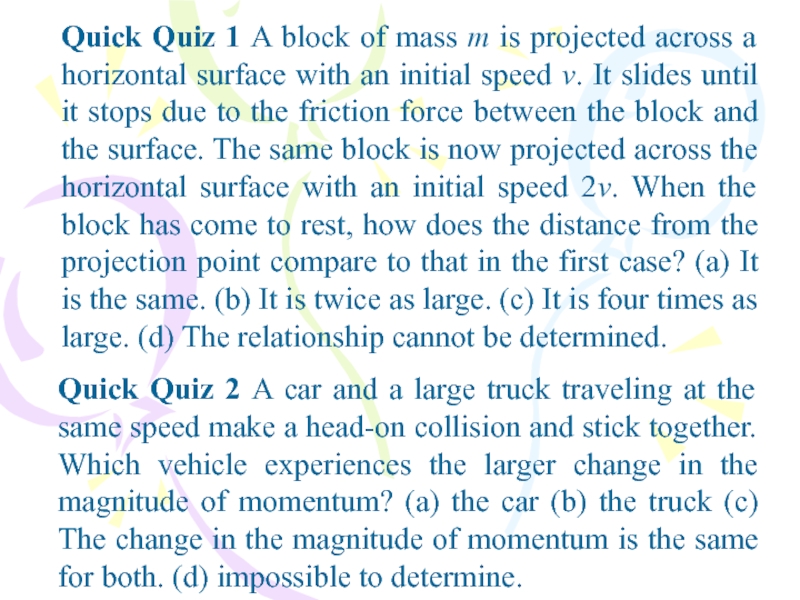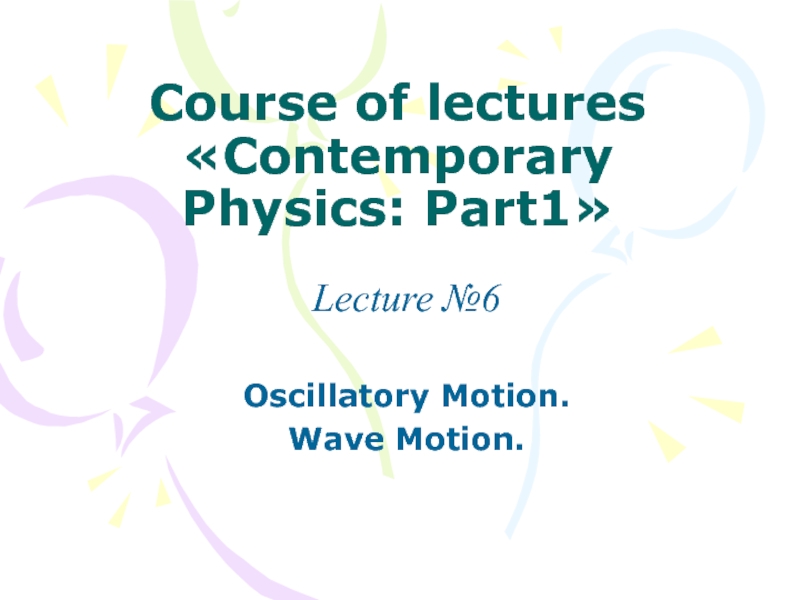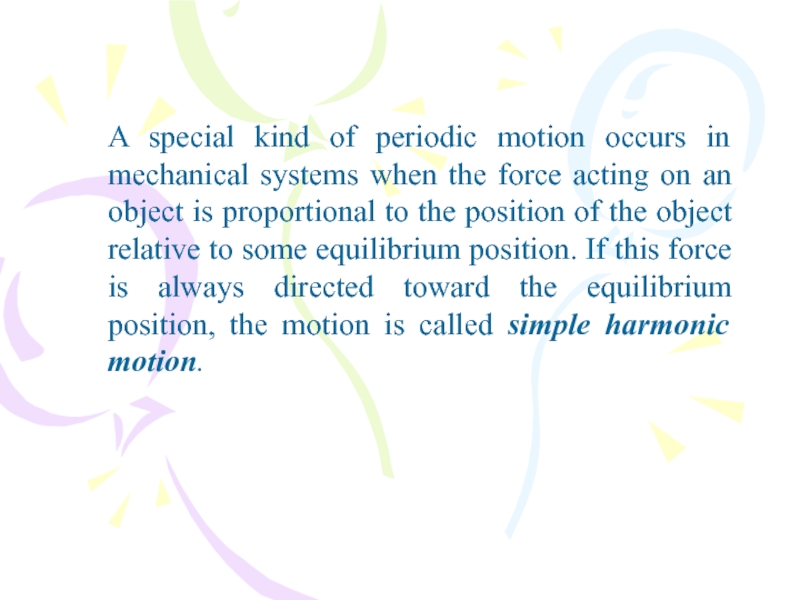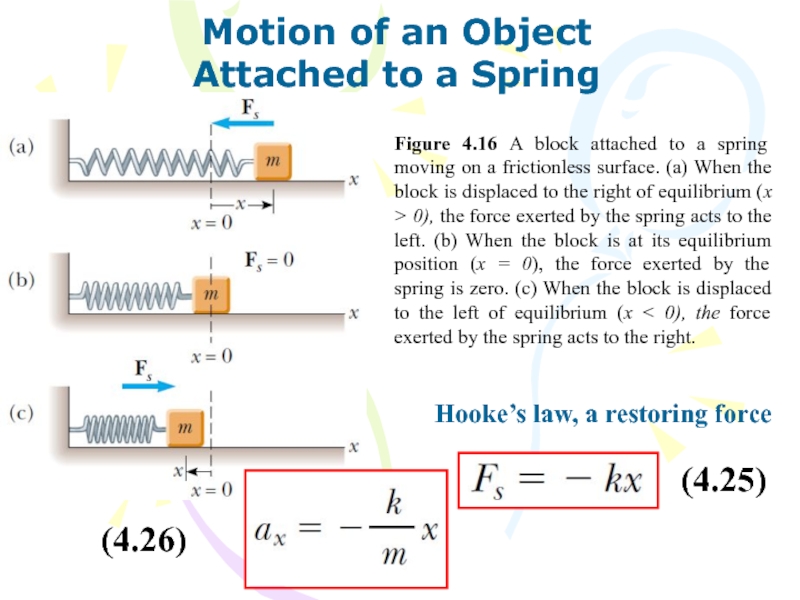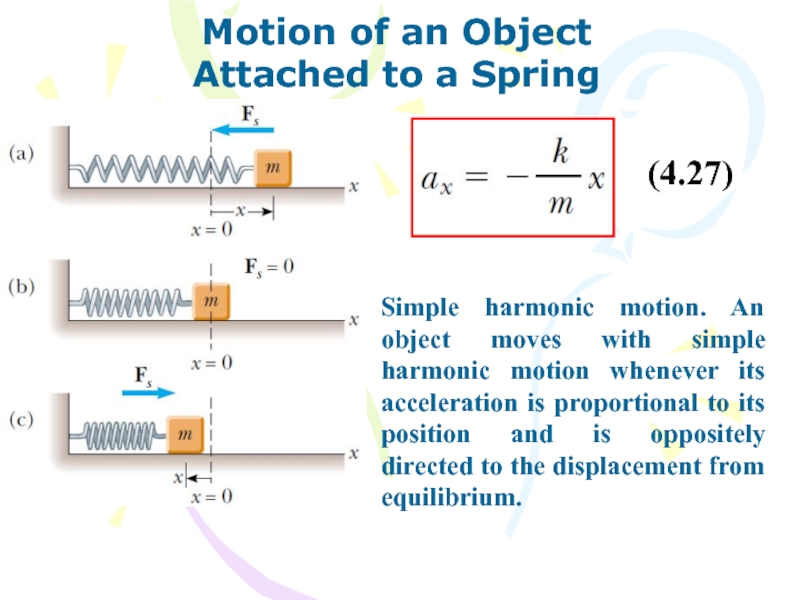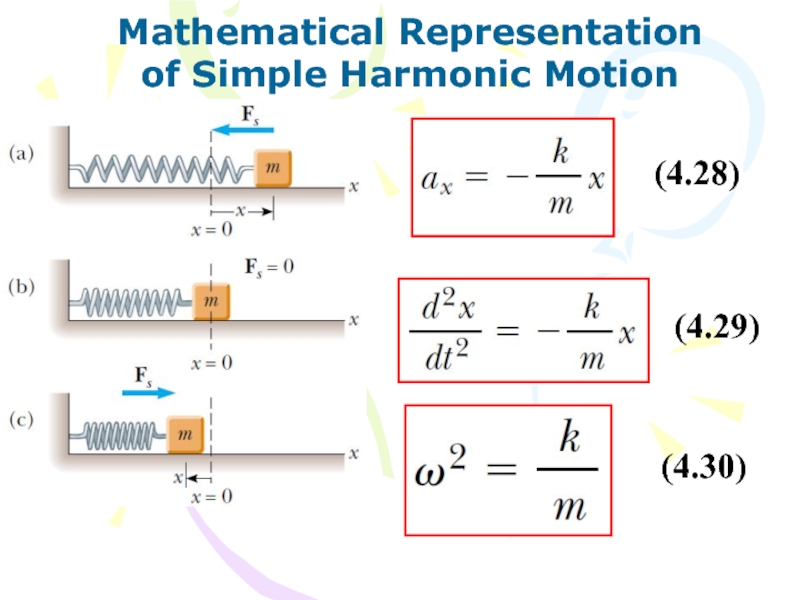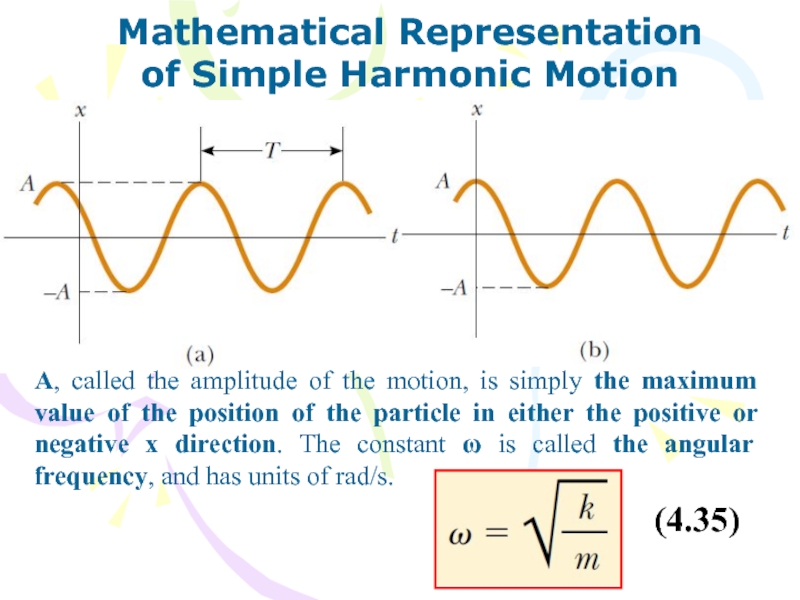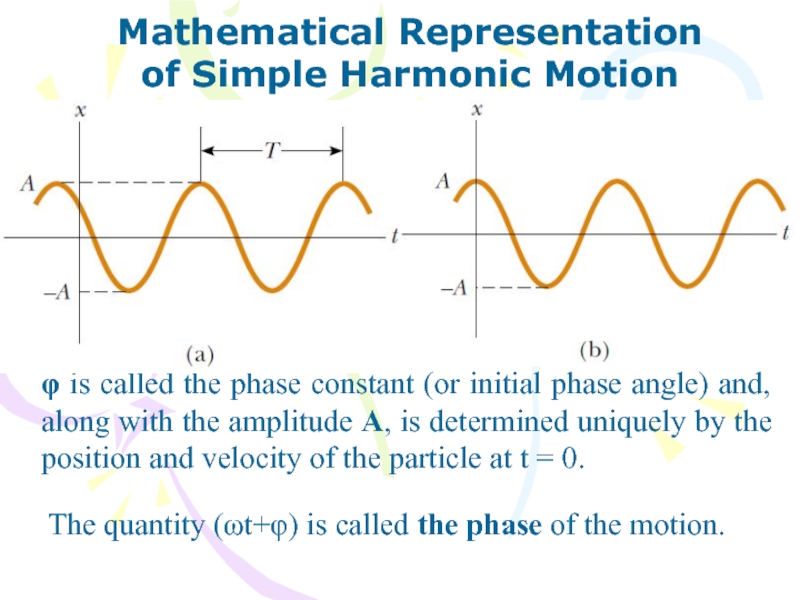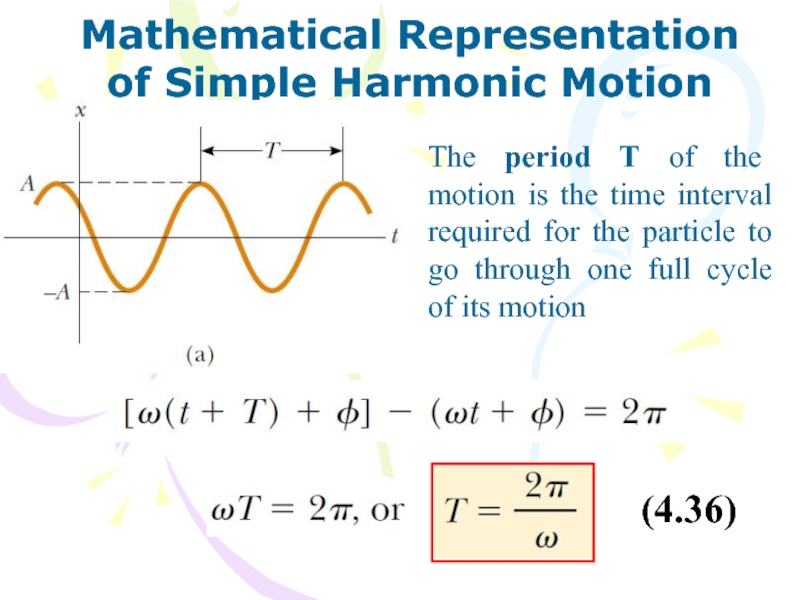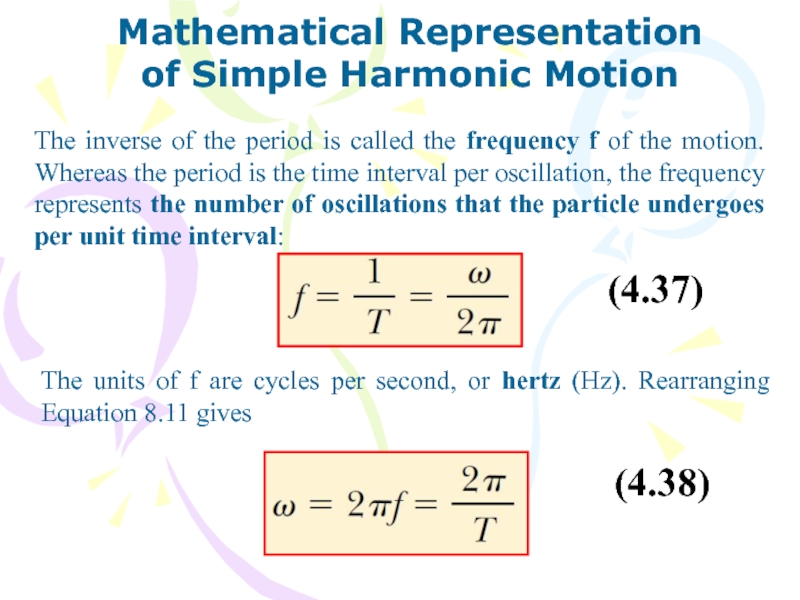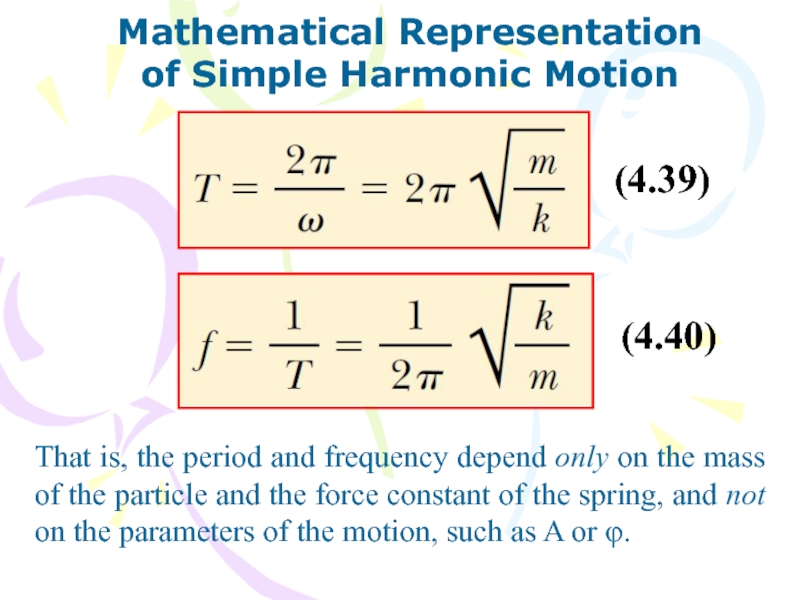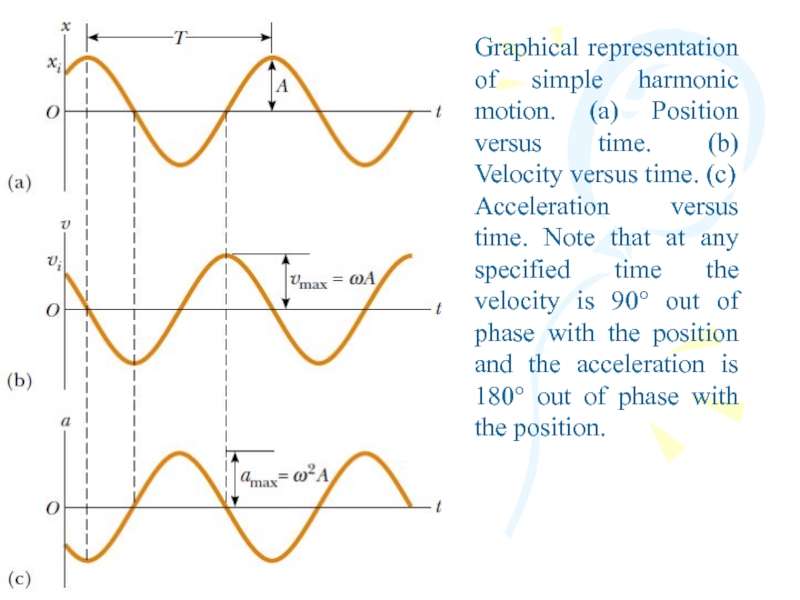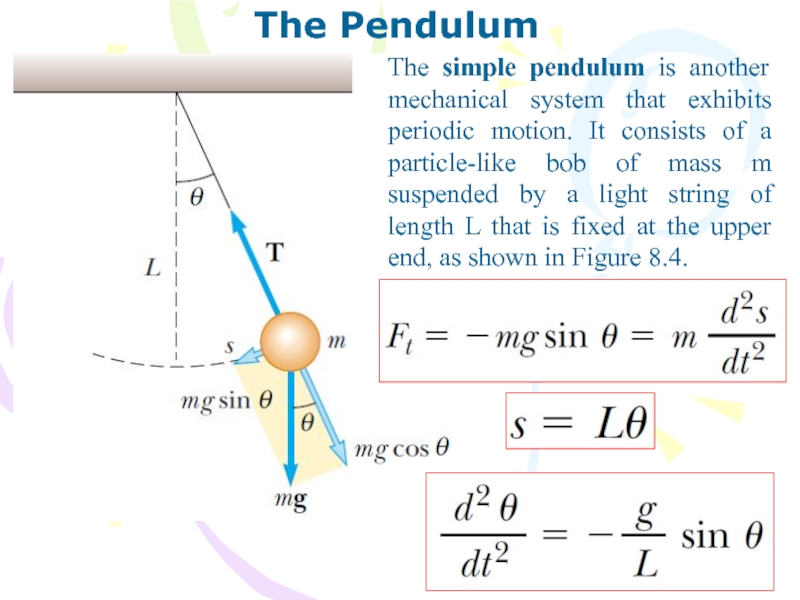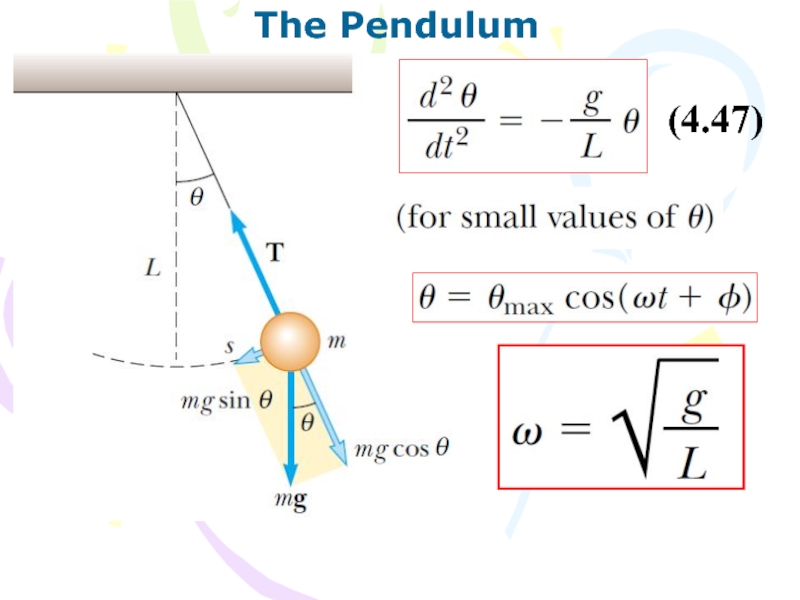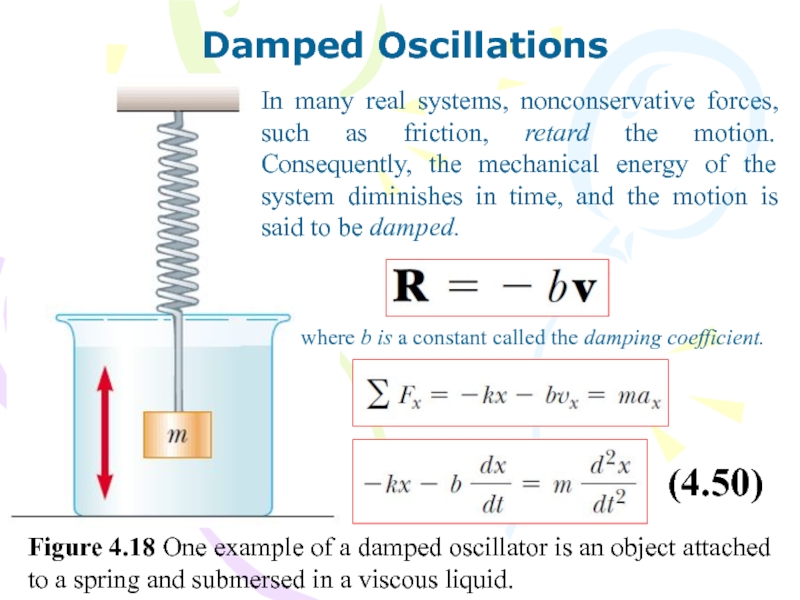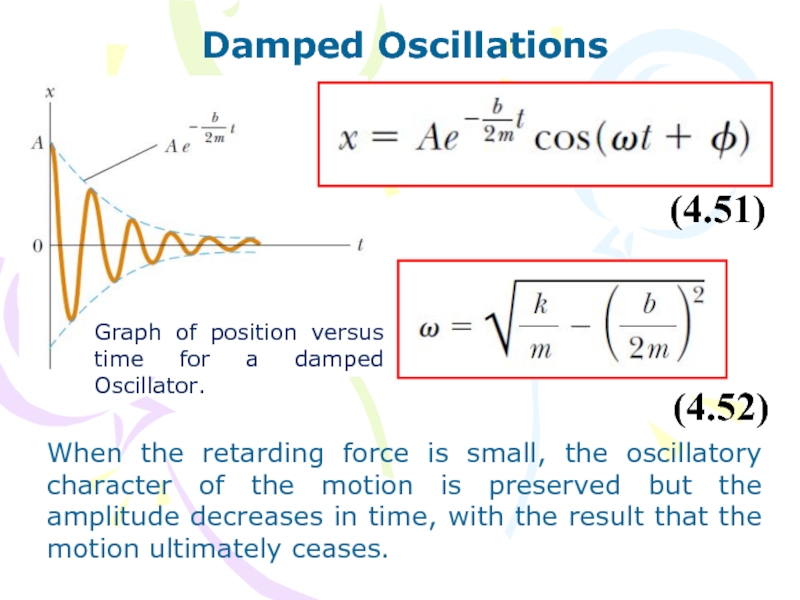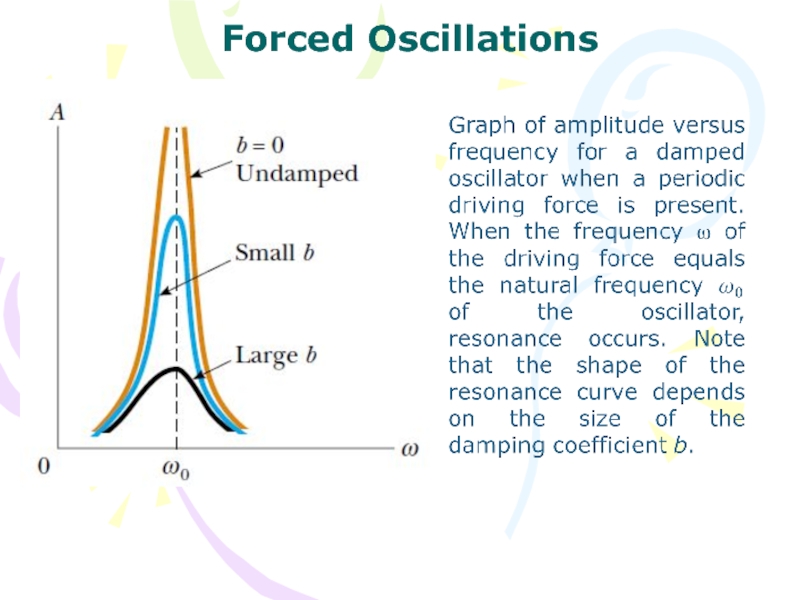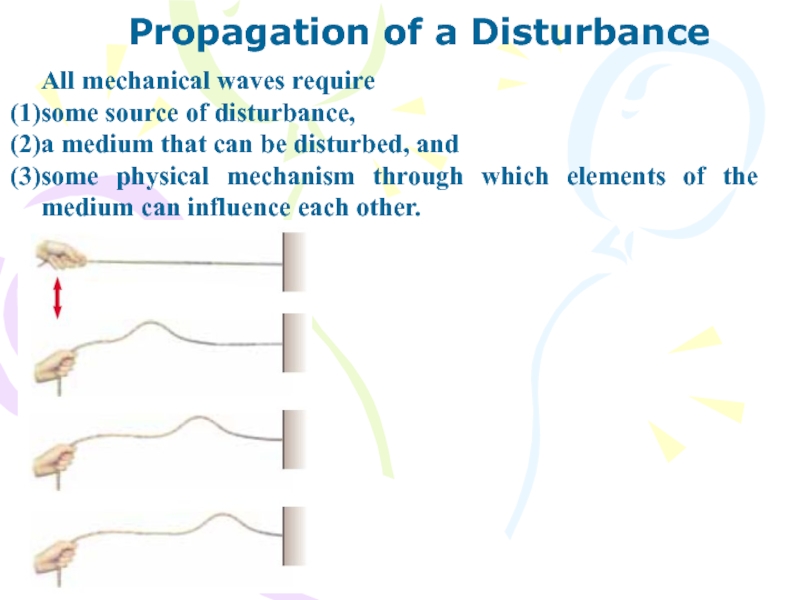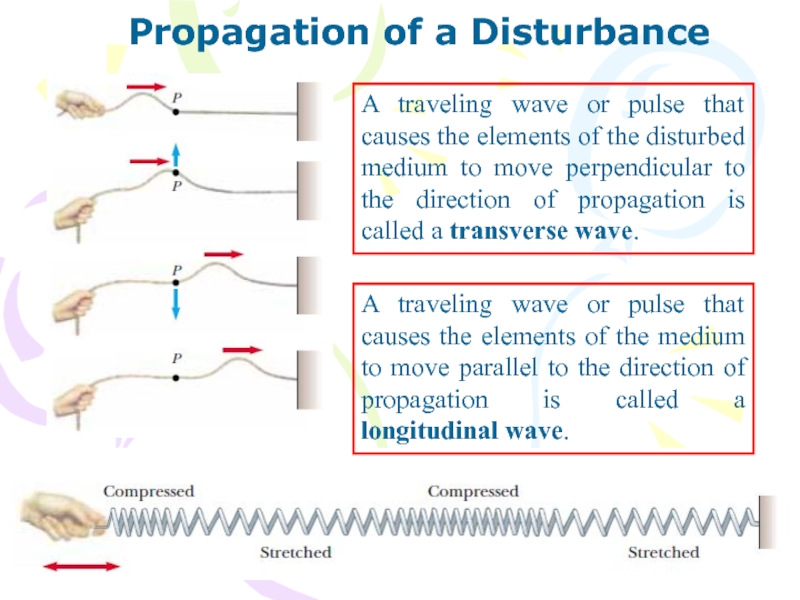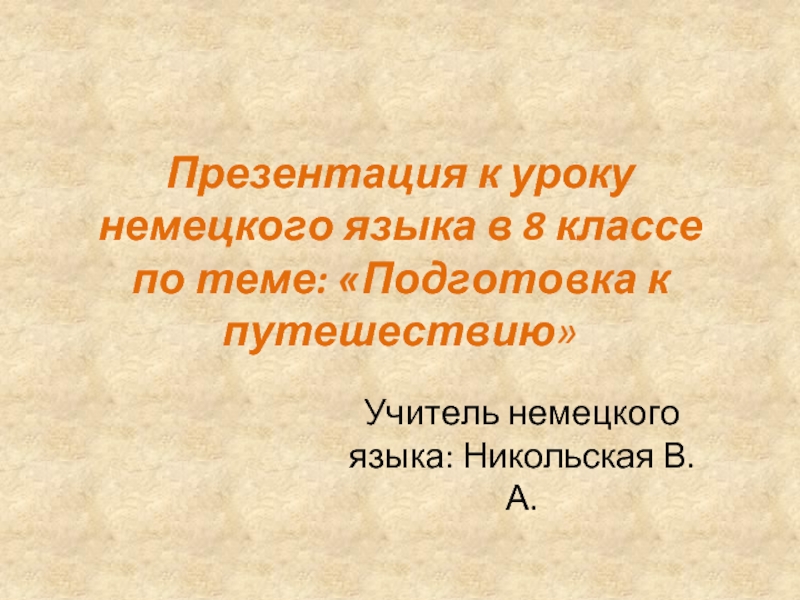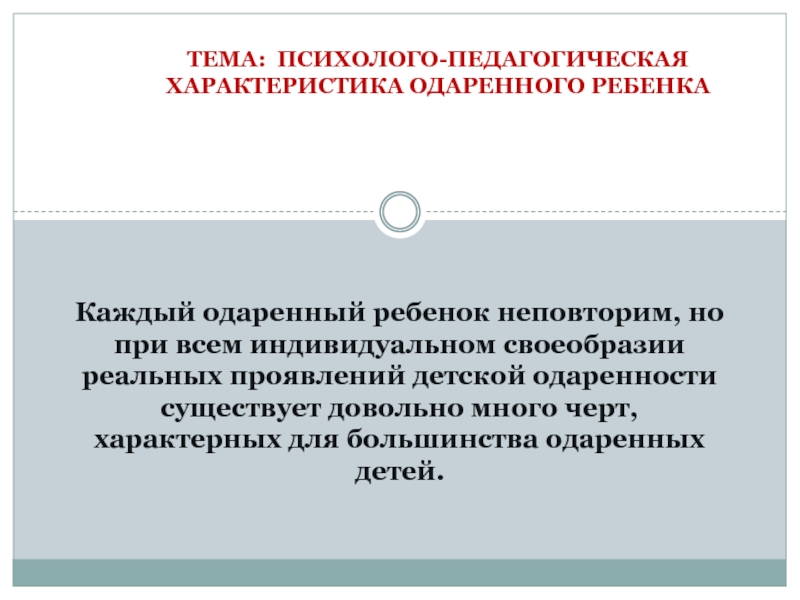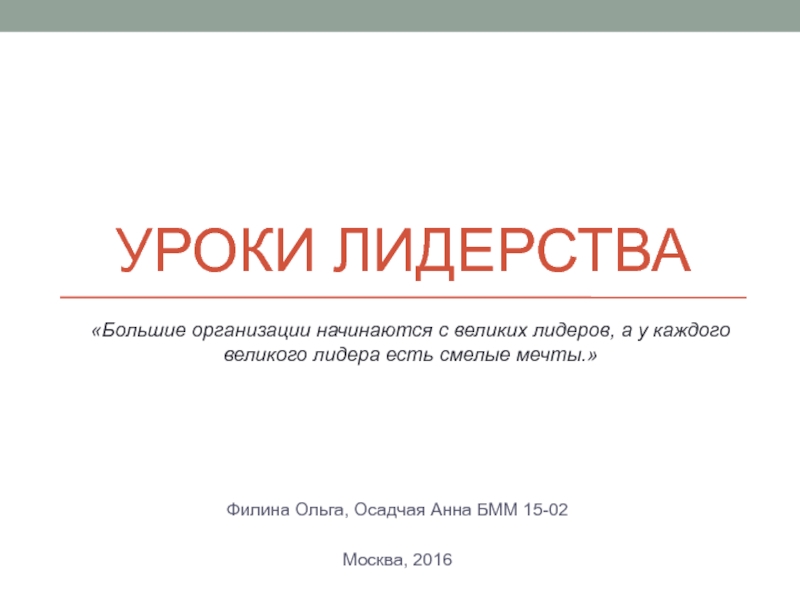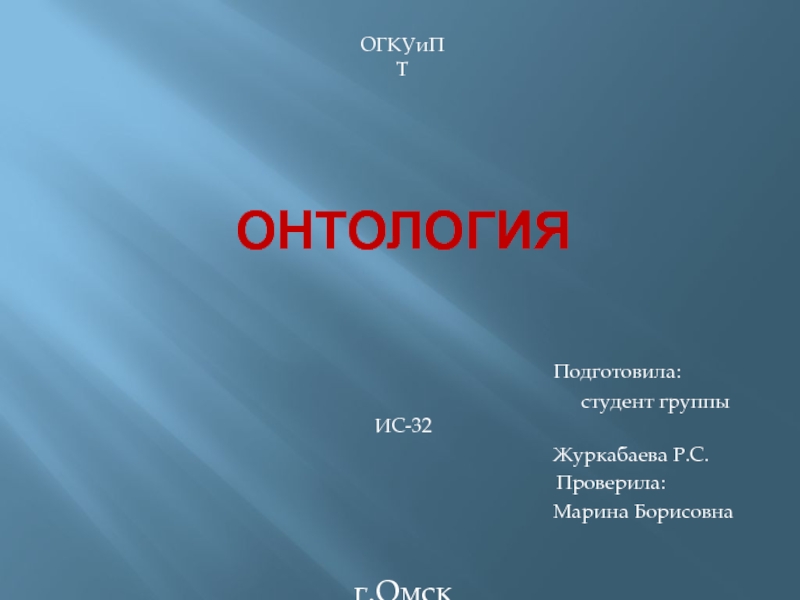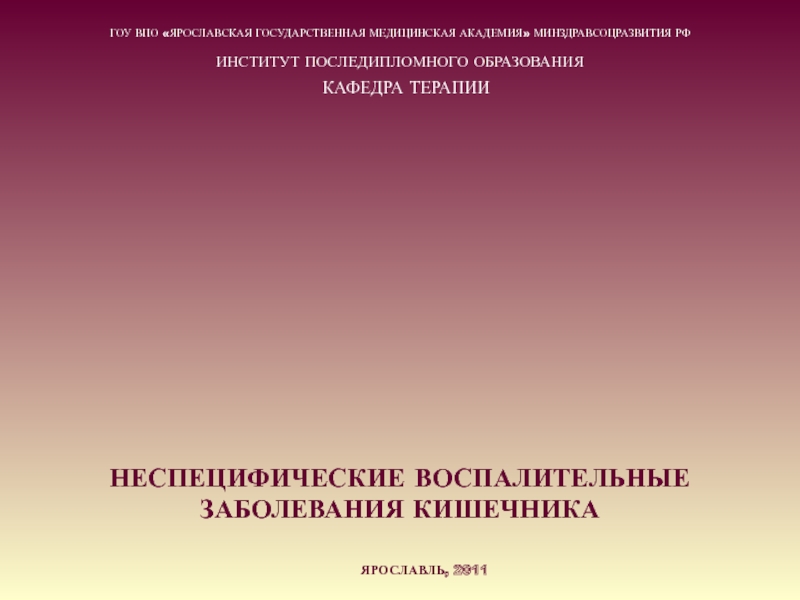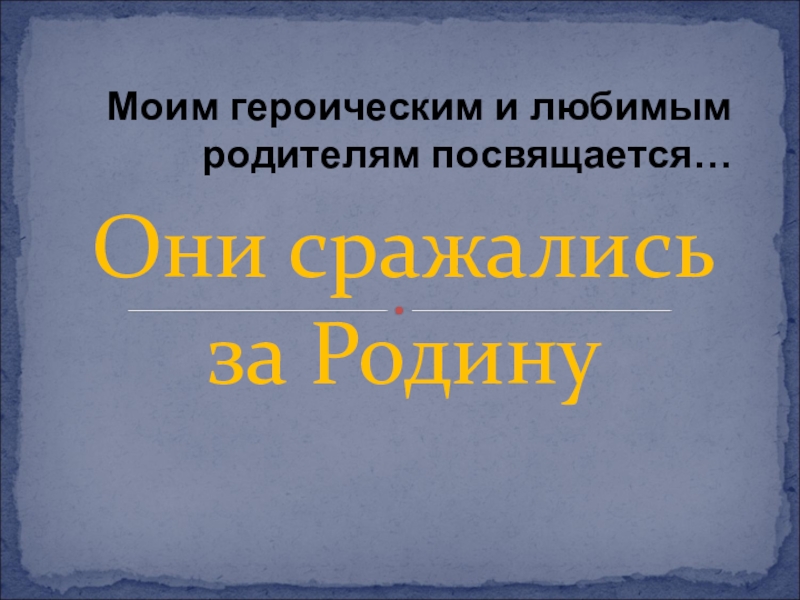Разделы презентаций
- Разное
- Английский язык
- Астрономия
- Алгебра
- Биология
- География
- Геометрия
- Детские презентации
- Информатика
- История
- Литература
- Математика
- Медицина
- Менеджмент
- Музыка
- МХК
- Немецкий язык
- ОБЖ
- Обществознание
- Окружающий мир
- Педагогика
- Русский язык
- Технология
- Физика
- Философия
- Химия
- Шаблоны, картинки для презентаций
- Экология
- Экономика
- Юриспруденция
Quiz
Содержание
- 1. Quiz
- 2. Quick Quiz 1 A block of mass
- 3. Course of lectures «Contemporary Physics: Part1»Lecture №6Oscillatory Motion.Wave Motion.
- 4. Periodic motion is motion of an object
- 5. A special kind of periodic motion occurs
- 6. Motion of an Object Attached to a
- 7. Motion of an Object Attached to a
- 8. Mathematical Representationof Simple Harmonic Motion(4.28)(4.29)(4.30)
- 9. Mathematical Representationof Simple Harmonic Motion(4.31)(4.32)(4.33)(4.34)
- 10. Mathematical Representationof Simple Harmonic MotionA, called the
- 11. Mathematical Representationof Simple Harmonic Motionφ is called
- 12. Mathematical Representationof Simple Harmonic MotionFigure 4.17 An
- 13. Mathematical Representationof Simple Harmonic Motion(4.36)The period T
- 14. Mathematical Representationof Simple Harmonic MotionThe inverse of
- 15. Mathematical Representationof Simple Harmonic Motion(4.39)(4.40)That is, the
- 16. Mathematical Representationof Simple Harmonic Motion(4.41)(4.42)(4.43)(4.44)
- 17. Energy of the Simple Harmonic Oscillator(4.45)(4.46)
- 18. Graphical representation of simple harmonic motion. (a)
- 19. The PendulumThe simple pendulum is another mechanical
- 20. The Pendulum(4.47)
- 21. The Pendulum(4.48)(4.49)In other words, the period and
- 22. Physical PendulumTorsional PendulumHome work
- 23. Damped OscillationsFigure 4.18 One example of a
- 24. Damped Oscillations(4.51)(4.52)Graph of position versus time for
- 25. Forced OscillationsresonanceAt resonance the applied force is
- 26. Forced Oscillations
- 27. Forced Oscillations(a) In 1940 turbulent winds set
- 28. Energy of the Simple Harmonic Oscillator(4.53)That is,
- 29. Propagation of a DisturbanceAll mechanical waves require
- 30. Propagation of a DisturbanceA traveling wave or
- 31. Propagation of a DisturbanceThe motion of water
- 32. Quick Quiz 4.1 Suppose you are standing
- 33. Скачать презентанцию
Слайды и текст этой презентации
Слайд 2Quick Quiz 1 A block of mass m is projected
across a horizontal surface with an initial speed v. It
slides until it stops due to the friction force between the block and the surface. The same block is now projected across the horizontal surface with an initial speed 2v. When the block has come to rest, how does the distance from the projection point compare to that in the first case? (a) It is the same. (b) It is twice as large. (c) It is four times as large. (d) The relationship cannot be determined.Quick Quiz 2 A car and a large truck traveling at the same speed make a head-on collision and stick together. Which vehicle experiences the larger change in the magnitude of momentum? (a) the car (b) the truck (c) The change in the magnitude of momentum is the same for both. (d) impossible to determine.
Слайд 4 Periodic motion is motion of an object that regularly repeats—the
object returns to a given position after a fixed time
interval. With a little thought, we can identify several types of periodic motion in everyday life. Your car returns to the driveway each afternoon. You return to the dinner table each night to eat. A bumped chandelier swings back and forth, returning to the same position at a regular rate. The Earth returns to the same position in its orbit around the Sun each year, resulting in the variation among the four seasons. The Moon returns to the same relationship with the Earth and the Sun, resulting in a full Moon approximately once a month.Слайд 5A special kind of periodic motion occurs in mechanical systems
when the force acting on an object is proportional to
the position of the object relative to some equilibrium position. If this force is always directed toward the equilibrium position, the motion is called simple harmonic motion.Слайд 6Motion of an Object Attached to a Spring
Figure 4.16 A
block attached to a spring moving on a frictionless surface.
(a) When the block is displaced to the right of equilibrium (x > 0), the force exerted by the spring acts to the left. (b) When the block is at its equilibrium position (x = 0), the force exerted by the spring is zero. (c) When the block is displaced to the left of equilibrium (x < 0), the force exerted by the spring acts to the right.(4.25)
Hooke’s law, a restoring force
(4.26)
Слайд 7Motion of an Object Attached to a Spring
Simple harmonic motion.
An object moves with simple harmonic motion whenever its acceleration
is proportional to its position and is oppositely directed to the displacement from equilibrium.(4.27)
Слайд 10Mathematical Representation
of Simple Harmonic Motion
A, called the amplitude of the
motion, is simply the maximum value of the position of
the particle in either the positive or negative x direction. The constant ω is called the angular frequency, and has units of rad/s.(4.35)
Слайд 11Mathematical Representation
of Simple Harmonic Motion
φ is called the phase constant
(or initial phase angle) and, along with the amplitude A,
is determined uniquely by the position and velocity of the particle at t = 0.The quantity (ωt+φ) is called the phase of the motion.
Слайд 12Mathematical Representation
of Simple Harmonic Motion
Figure 4.17 An experimental apparatus for
demonstrating simple harmonic motion. A pen attached to the oscillating
object traces out a sinusoidal pattern on the moving chart paper.Слайд 13Mathematical Representation
of Simple Harmonic Motion
(4.36)
The period T of the motion
is the time interval required for the particle to go
through one full cycle of its motionСлайд 14Mathematical Representation
of Simple Harmonic Motion
The inverse of the period is
called the frequency f of the motion. Whereas the period
is the time interval per oscillation, the frequency represents the number of oscillations that the particle undergoes per unit time interval:The units of f are cycles per second, or hertz (Hz). Rearranging Equation 8.11 gives
(4.37)
(4.38)
Слайд 15Mathematical Representation
of Simple Harmonic Motion
(4.39)
(4.40)
That is, the period and frequency
depend only on the mass of the particle and the
force constant of the spring, and not on the parameters of the motion, such as A or φ.Слайд 18Graphical representation of simple harmonic motion. (a) Position versus time.
(b) Velocity versus time. (c) Acceleration versus time. Note that
at any specified time the velocity is 90° out of phase with the position and the acceleration is 180° out of phase with the position.Слайд 19The Pendulum
The simple pendulum is another mechanical system that exhibits
periodic motion. It consists of a particle-like bob of mass
m suspended by a light string of length L that is fixed at the upper end, as shown in Figure 8.4.Слайд 21The Pendulum
(4.48)
(4.49)
In other words, the period and frequency of a
simple pendulum depend only on the length of the string
and the acceleration due to gravity.Слайд 23Damped Oscillations
Figure 4.18 One example of a damped oscillator is
an object attached to a spring and submersed in a
viscous liquid.In many real systems, nonconservative forces, such as friction, retard the motion. Consequently, the mechanical energy of the system diminishes in time, and the motion is said to be damped.
where b is a constant called the damping coefficient.
(4.50)
Слайд 24Damped Oscillations
(4.51)
(4.52)
Graph of position versus time for a damped Oscillator.
When
the retarding force is small, the oscillatory character of the
motion is preserved but the amplitude decreases in time, with the result that the motion ultimately ceases.Слайд 25Forced Oscillations
resonance
At resonance the applied force is in phase with
the velocity and the power transferred to the oscillator is
a maximum.Слайд 27Forced Oscillations
(a) In 1940 turbulent winds set up torsional vibrations
in the Tacoma Narrows Bridge, causing it to oscillate at
a frequency near one of the natural frequencies of the bridge structure. (b) Once established, this resonance condition led to the bridge’s collapse.Слайд 28Energy of the Simple Harmonic Oscillator
(4.53)
That is, the total mechanical
energy of a simple harmonic oscillator is a constant of
the motion and is proportional to the square of the amplitude.(4.54)
Слайд 29Propagation of a Disturbance
All mechanical waves require
some source of
disturbance,
a medium that can be disturbed, and
some physical
mechanism through which elements of the medium can influence each other.Слайд 30Propagation of a Disturbance
A traveling wave or pulse that causes
the elements of the disturbed medium to move perpendicular to
the direction of propagation is called a transverse wave.A traveling wave or pulse that causes the elements of the medium to move parallel to the direction of propagation is called a longitudinal wave.
Слайд 31Propagation of a Disturbance
The motion of water elements on the
surface of deep water in which a wave is propagating
is a combination of transverse and longitudinal displacements, with the result that elements at the surface move in nearly circular paths. Each element is displaced both horizontally and vertically from its equilibrium position.Слайд 32Quick Quiz 4.1 Suppose you are standing directly behind someone
who steps back and accidentally stomps on your foot with
the heel of one shoe. Would you be better off if that person were (a) a large professional basketball player wearing sneakers (b) a petite woman wearing spike-heeled shoes?Quick Quiz 4.2 A grandfather clock depends on the period of a pendulum to keep correct time. Suppose a grandfather clock is calibrated correctly and then a mischievous child slides the bob of the pendulum downward on the oscillating rod. Does the grandfather clock run (a) slow (b) fast (c) correctly?
